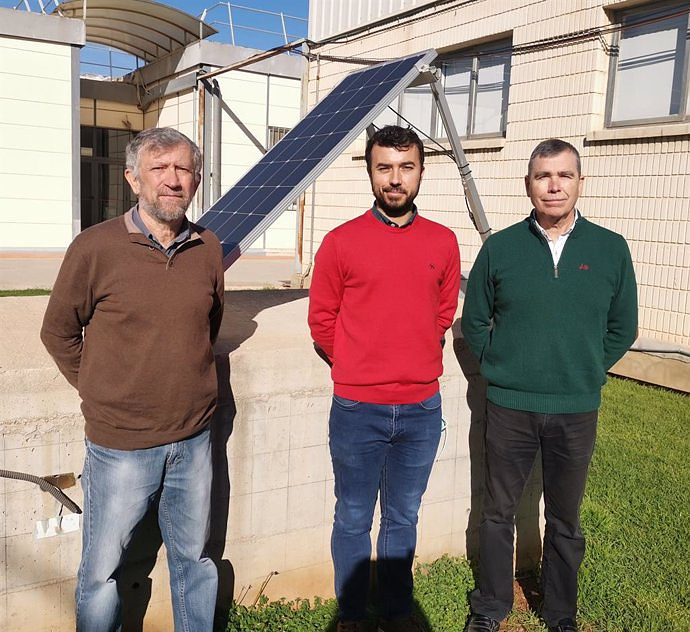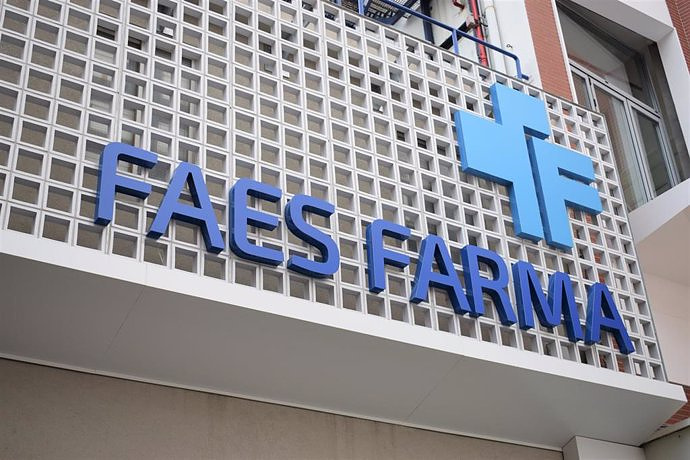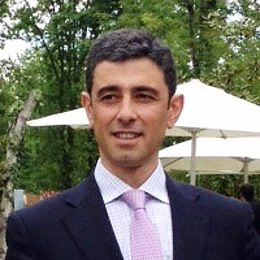VALENCIA, 27 Mar. (EUROPA PRESS) -
The Universitat Politècnica de València (UPV) has developed a "pioneering" technology to detect and prevent corrosion in reinforced concrete structures. The proposal to implement it in the city of Valencia has been awarded the prestigious Sandalio Miguel and María Aparicio Award.
The stock of buildings and large infrastructures in Spain faces a serious problem: aging. The useful life of reinforced concrete is 50 years, mainly due to the corrosion of the steel in its reinforcement. Early detection of damage makes it possible to control deterioration, speed up repairs and minimize maintenance costs.
This is what the SMaRT research group of the Polytechnic University of Valencia has achieved: a corrosion monitoring system that offers precise results in real time, which allows estimating the residual useful life of the structure, it is valid for both new construction and for existing constructions, it is automated and has low cost. The system can be controlled from a mobile application, the academic institution highlights in a statement.
Currently, the patent for the system is being exploited by a company. The proposal for its use to be extended to the city of València, by researcher Josep Ramon Lliso Ferrando, has been worthy of the prestigious Sandalio Miguel and María Aparicio Award, among other recognitions. It should be noted that Josep Ramon developed and validated the novel measurement technique used by the system, in his doctoral thesis directed by professors Juan Soto and Manuel Valcuende, from the SMaRT group of the UPV.
According to Lliso, "reinforced concrete constructions in the city of Valencia, due to their proximity to the sea and the humidity and temperature conditions, are highly susceptible to suffering corrosion processes throughout their useful life and being seriously affected."
In his award-winning work "Implementation of the MARCHA Project in the city of Valencia. Autonomous and Remote Monitoring of Corrosion in Reinforced Concrete", the researcher identifies more than 100 reinforced concrete constructions with significant corrosion damage.
Among them, housing blocks, schools and institutes and also very important road infrastructure such as bridges and tunnels to access the city.
In his proposal, Lliso transfers strategies for implementation in infrastructure and buildings and even the creation of a sensor network on the Vera university campus of the UPV, "where there are buildings that are more than 50 years old, close to the sea and with significant damage due to corrosion".
"Corrosion of reinforcement in reinforced concrete structures is a very common problem, difficult to detect and with a significant economic and environmental impact. In addition, it represents a significant human risk," explains UPV professor and researcher Josep Ramon Lliso. .
Currently, the most widespread corrosion detection systems have major limitations: they generally require the movement of qualified personnel; They usually provide data that only indicates the probability that corrosion processes exist and can offer unreliable results.
The technology of the SMaRT group of the UPV is already being applied in real infrastructures. The first installation was carried out in a small structure built at the UPV Higher Technical School of Building Engineering.
It is currently being used successfully in road, port and maritime structures, such as bridges, viaducts, pontoons, docks or punts, and is even being used to validate the design of windmill floats located in the open sea.
In addition, there is collaboration with different companies and it is planned to soon install this monitoring system in infrastructures in Valencia, Castellón and Alicante, as announced by researchers Juan Soto and Manuel Valcuende.
The collapse of the O Castro Viaduct in Lugo, at the end of 2022, is an example of what can happen if corrosion goes unnoticed and no action is taken: "It was a relatively new structure, with water leak problems. water. Along with other factors, it led to structural collapse. The cost of demolition and reconstruction of the infrastructure was more than 30 million euros," explains Lliso.
The expansion of the early corrosion detection system proposed by the UPV, which uses sensors embedded in concrete, has the capacity to monitor the state of buildings, reduce maintenance costs and act before this type of disaster occurs. .
The second prize Miguel and María Aparicio also went to a UPV graduate, for his final master's work "Transition to adult life: From protection to independence" carried out by Lucas Maestro Tornberg, master's degree in Architecture. From his personal experience, he evaluates different buildings and unifies two projects, a protection center together with a group of homes for young people from 18 years old.

 Exploring Cardano: Inner Workings and Advantages of this Cryptocurrency
Exploring Cardano: Inner Workings and Advantages of this Cryptocurrency Seville.- Economy.- Innova.- STSA inaugurates its new painting and sealing hangar in San Pablo, for 18 million
Seville.- Economy.- Innova.- STSA inaugurates its new painting and sealing hangar in San Pablo, for 18 million Innova.- More than 300 volunteers join the Andalucía Compromiso Digital network in one month to facilitate access to ICT
Innova.- More than 300 volunteers join the Andalucía Compromiso Digital network in one month to facilitate access to ICT Innova.-AMP.- Ayesa acquires 51% of Sadiel, which will create new technological engineering products and expand markets
Innova.-AMP.- Ayesa acquires 51% of Sadiel, which will create new technological engineering products and expand markets STATEMENT: ELFBAR and LOST MARY reveal progress in the fight against illicit vapers (1)
STATEMENT: ELFBAR and LOST MARY reveal progress in the fight against illicit vapers (1) STATEMENT: ELFBAR and LOST MARY reveal progress in the fight against illicit vapers (2)
STATEMENT: ELFBAR and LOST MARY reveal progress in the fight against illicit vapers (2)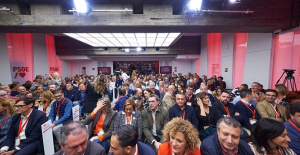 The PSOE is holding a Federal Committee this Saturday that will serve to close ranks with Sánchez so that he does not resign
The PSOE is holding a Federal Committee this Saturday that will serve to close ranks with Sánchez so that he does not resign The Ibex 35 closes the week at its highest since 2015 and is already looking at 11,200
The Ibex 35 closes the week at its highest since 2015 and is already looking at 11,200 How Blockchain in being used to shape the future
How Blockchain in being used to shape the future Not just BTC and ETH: Here Are Some More Interesting Coins Worth Focusing on
Not just BTC and ETH: Here Are Some More Interesting Coins Worth Focusing on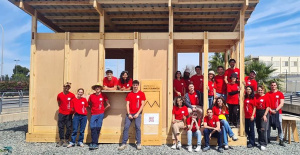 UPV students build a prototype of a wooden house to move to Equatorial Guinea
UPV students build a prototype of a wooden house to move to Equatorial Guinea The UA opens the call for the Impulso 2024 Awards for the best innovative business initiatives
The UA opens the call for the Impulso 2024 Awards for the best innovative business initiatives ALI, virtual assistant from Alicante, internationally recognized by the OECD
ALI, virtual assistant from Alicante, internationally recognized by the OECD Retrópolis brings the golden age of video games and computing to the UPV
Retrópolis brings the golden age of video games and computing to the UPV A million people demonstrate in France against Macron's pension reform
A million people demonstrate in France against Macron's pension reform Russia launches several missiles against "critical infrastructure" in the city of Zaporizhia
Russia launches several missiles against "critical infrastructure" in the city of Zaporizhia A "procession" remembers the dead of the Calabria shipwreck as bodies continue to wash up on the shore
A "procession" remembers the dead of the Calabria shipwreck as bodies continue to wash up on the shore Prison sentences handed down for three prominent Hong Kong pro-democracy activists
Prison sentences handed down for three prominent Hong Kong pro-democracy activists ETH continues to leave trading platforms, Ethereum balance on exchanges lowest in 3 years
ETH continues to leave trading platforms, Ethereum balance on exchanges lowest in 3 years Investors invest $450 million in Consensys, Ethereum incubator now valued at $7 billion
Investors invest $450 million in Consensys, Ethereum incubator now valued at $7 billion Alchemy Integrates Ethereum L2 Product Starknet to Enhance Web3 Scalability at a Price 100x Lower Than L1 Fees
Alchemy Integrates Ethereum L2 Product Starknet to Enhance Web3 Scalability at a Price 100x Lower Than L1 Fees Mining Report: Bitcoin's Electricity Consumption Declines by 25% in Q1 2022
Mining Report: Bitcoin's Electricity Consumption Declines by 25% in Q1 2022 Oil-to-Bitcoin Mining Firm Crusoe Energy Systems Raised $505 Million
Oil-to-Bitcoin Mining Firm Crusoe Energy Systems Raised $505 Million Microbt reveals the latest Bitcoin mining rigs -- Machines produce up to 126 TH/s with custom 5nm chip design
Microbt reveals the latest Bitcoin mining rigs -- Machines produce up to 126 TH/s with custom 5nm chip design Bitcoin's Mining Difficulty Hits a Lifetime High, With More Than 90% of BTC Supply Issued
Bitcoin's Mining Difficulty Hits a Lifetime High, With More Than 90% of BTC Supply Issued The Biggest Movers are Near, EOS, and RUNE during Friday's Selloff
The Biggest Movers are Near, EOS, and RUNE during Friday's Selloff Global Markets Spooked by a Hawkish Fed and Covid, Stocks and Crypto Gain After Musk Buys Twitter
Global Markets Spooked by a Hawkish Fed and Covid, Stocks and Crypto Gain After Musk Buys Twitter Bitso to offset carbon emissions from the Trading Platform's ERC20, ETH, and BTC Transactions
Bitso to offset carbon emissions from the Trading Platform's ERC20, ETH, and BTC Transactions Draftkings Announces 2022 College Hoops NFT Selection for March Madness
Draftkings Announces 2022 College Hoops NFT Selection for March Madness